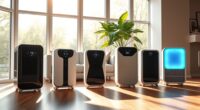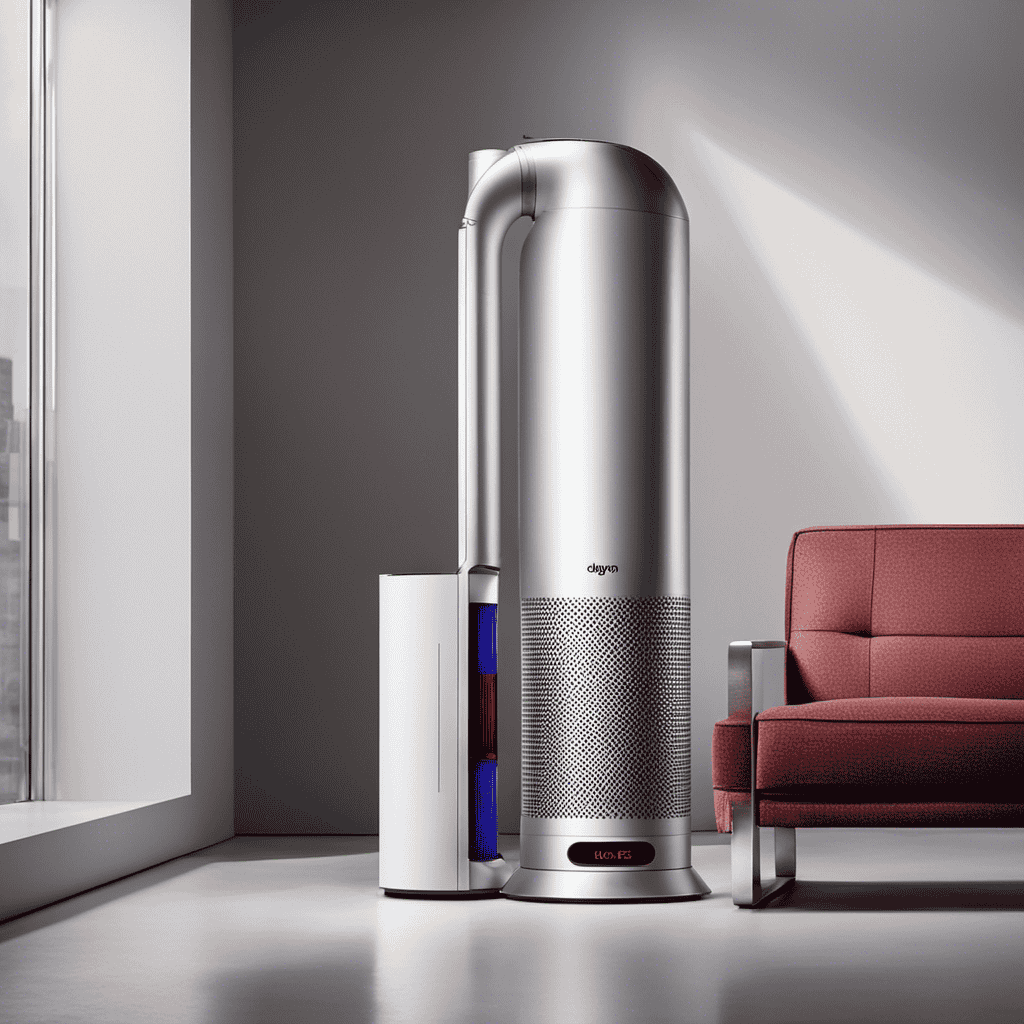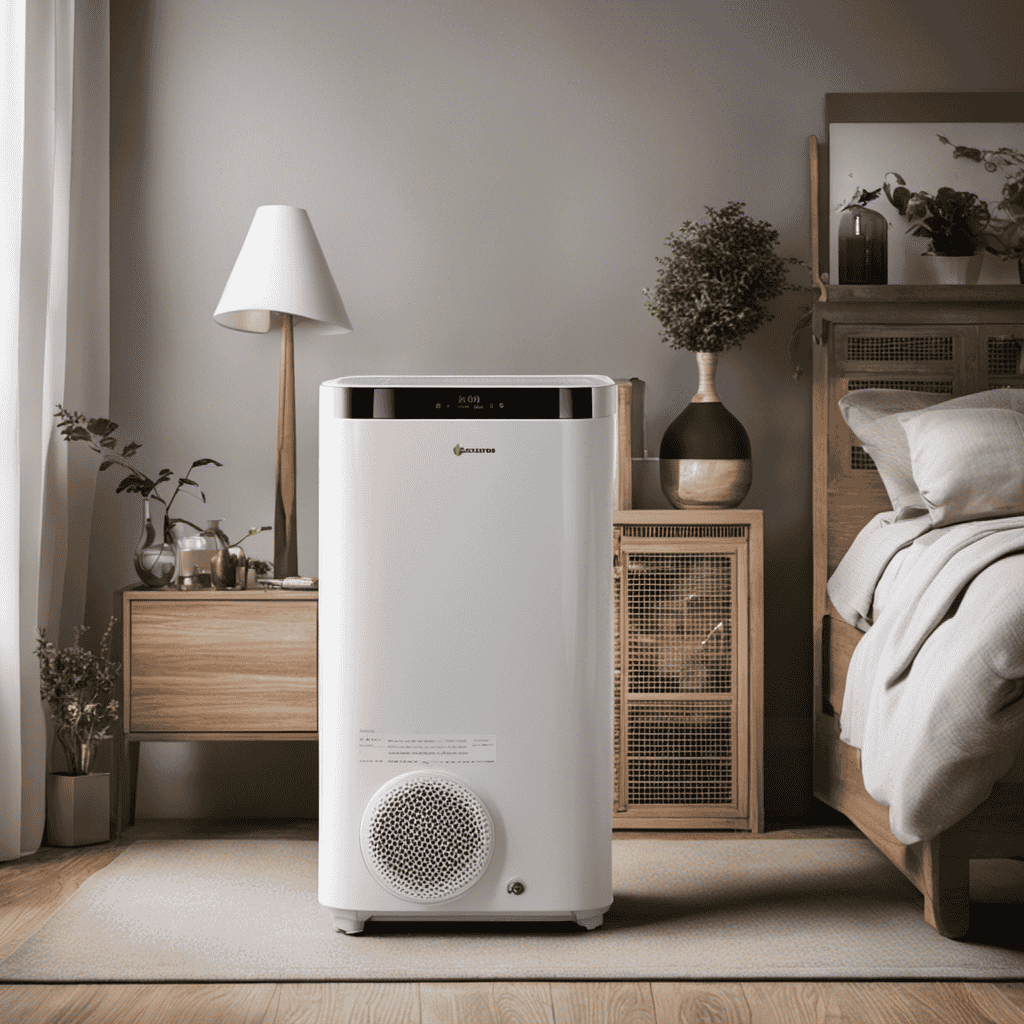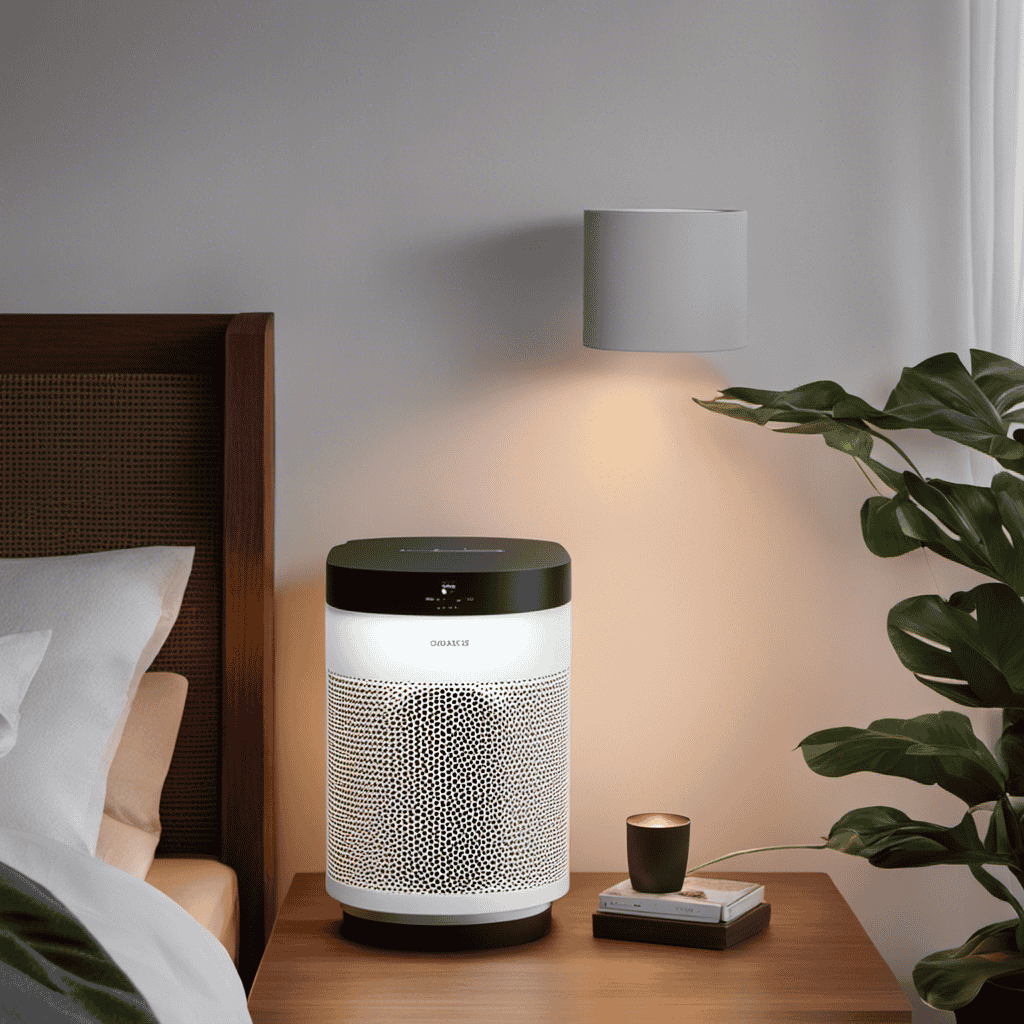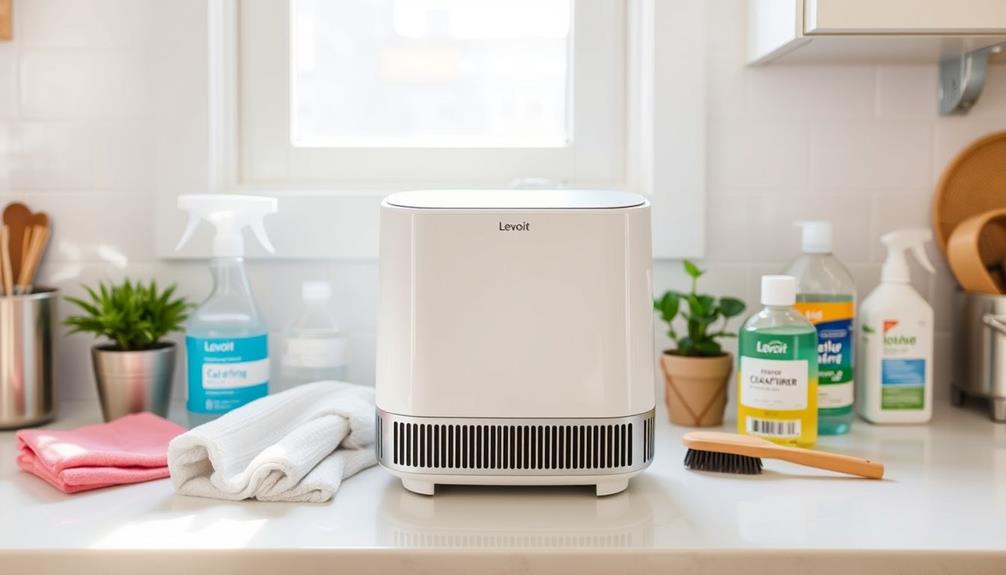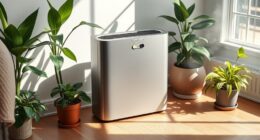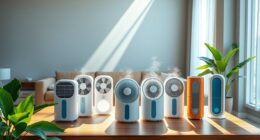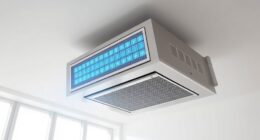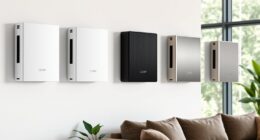To use your air purifier safely, make sure you select the right unit for your room size and maintain proper placement—avoid corners or obstructions that block airflow. Regularly check and change filters as recommended, and don’t forget to clean vents and exterior surfaces. Use fan settings appropriately, and combine device use with proper ventilation methods. Keep safety guidelines in mind, and you’ll maximize effectiveness while avoiding common mistakes—more tips to come if you keep exploring.
Key Takeaways
- Regularly inspect and replace filters as recommended to prevent clogging and ensure optimal air purification.
- Properly position the purifier in the center of the room at ear level or slightly above to maximize airflow.
- Keep vents and air intake/outlet areas unobstructed by furniture, curtains, or objects for effective circulation.
- Follow manufacturer safety guidelines, including avoiding placement near moisture sources or water to prevent hazards.
- Clean the device regularly and avoid leaving it on continuously to extend its lifespan and maintain safe operation.
Choosing the Right Air Purifier for Your Space
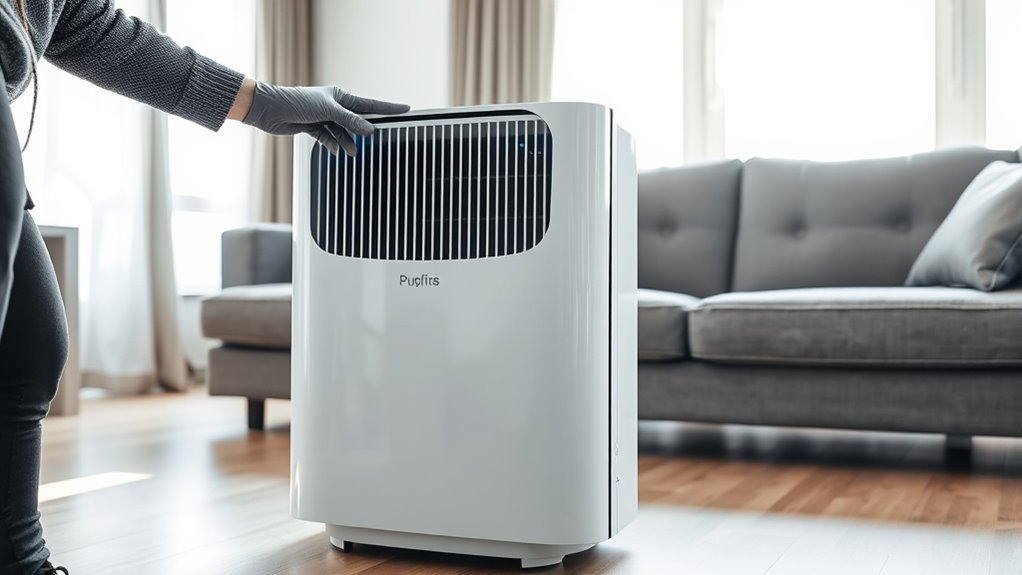
How do you know which air purifier is best for your space? Start by exploring different air purifier brands, as each offers unique features and performance levels. Consider the size of your room—larger spaces need models with higher CADR ratings to effectively clean the air. Cost considerations also play a crucial role; while some brands may seem expensive upfront, they could save you money long-term through energy efficiency and durability. Balance your budget with your specific needs, such as filter types and noise levels. Reading reviews and comparing models can help you identify those with high-quality filters and reliable performance. Additionally, evaluating filter replacement indicators and noise levels can ensure the unit operates optimally and comfortably in your environment. Staying informed about AI-powered safety features can further help you make smarter, safer choices for your air quality. Recognizing the importance of air purification technology can guide you toward selecting the most effective device. Being aware of testing and certification standards can also help you select a device that meets safety and performance benchmarks. Making an informed choice helps you select an air purifier that fits your space, budget, and air quality requirements.
Proper Placement of Your Air Purifier
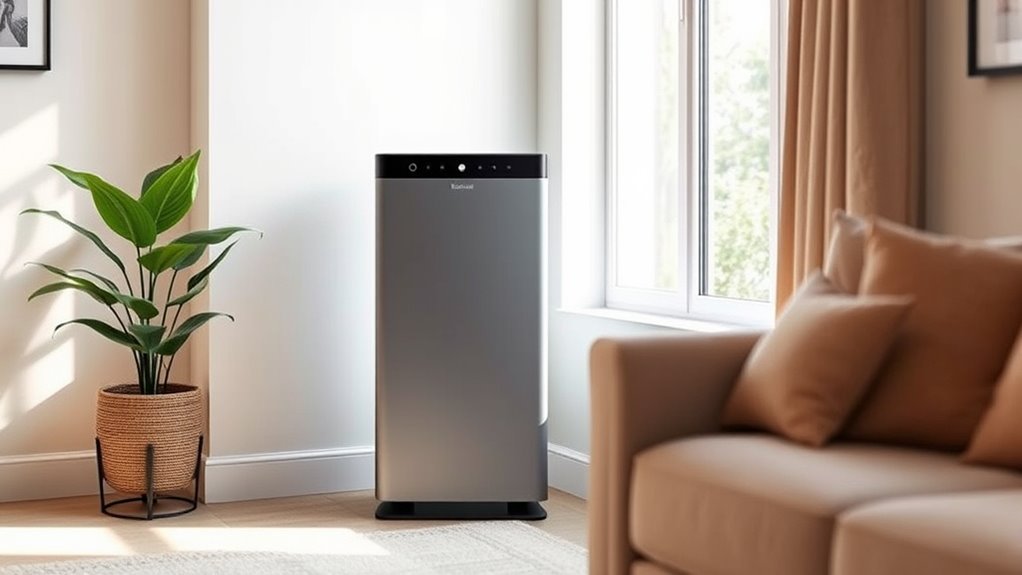
To maximize your air purifier’s effectiveness, placing it in the right location is essential. Start by considering your room size; larger spaces may require a more powerful unit or strategic placement near the center to ensure even air circulation. Avoid placing the purifier in corners or behind furniture, as this can block airflow. Instead, position it at an ideal placement height—typically around ear level or slightly above—to help it draw in and circulate air effectively. Keep it away from walls or objects that could obstruct the intake or outlet vents. Proper placement ensures your purifier works efficiently, capturing airborne pollutants before they spread throughout the room. Additionally, understanding air purifier placement best practices can help you avoid common mistakes and maximize air quality improvements. Proper placement also involves considering common placement mistakes, which can significantly reduce the unit’s effectiveness. Taking these steps helps you get the most benefit while avoiding common placement mistakes, and being aware of airflow patterns can further enhance your purifier’s performance. Proper positioning is also crucial because air quality can vary significantly depending on where the unit is located within a space.
Regular Maintenance and Filter Changes
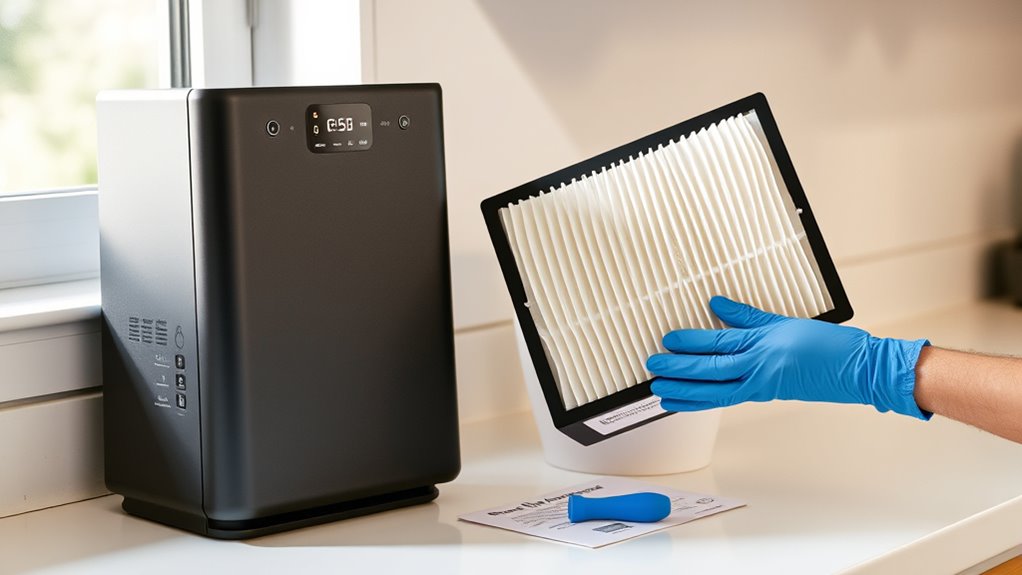
Regular maintenance and timely filter changes are key to ensuring your air purifier works effectively. Ignoring the filter lifespan can reduce filtration efficiency and shorten your device’s lifespan. To stay on top of this, follow a simple maintenance checklist:
- Check filters monthly for dirt and debris buildup.
- Replace filters according to the manufacturer’s recommended schedule.
- Clean pre-filters regularly to extend their lifespan.
- Keep the unit’s vents and exterior dust-free.
- Be aware of the filter connection types used in your air purifier to ensure proper replacements.
- Proper filter management can also prevent potential prohibited transactions that might compromise your device’s performance.
- Understanding your device’s filter type can help you choose the correct replacements and maintain optimal filtration.
- Staying informed about AI advancements helps in choosing smarter, more efficient air purification solutions.
Regular upkeep not only maintains ideal air quality but also prevents strain on your appliance. Staying consistent with filter changes ensures your purifier continues to remove allergens, pollutants, and odors effectively. Don’t forget, a well-maintained unit performs better and lasts longer. Using a maintenance checklist keeps you organized and guarantees your air purifier operates at peak performance.
Understanding Air Purifier Specifications and Settings
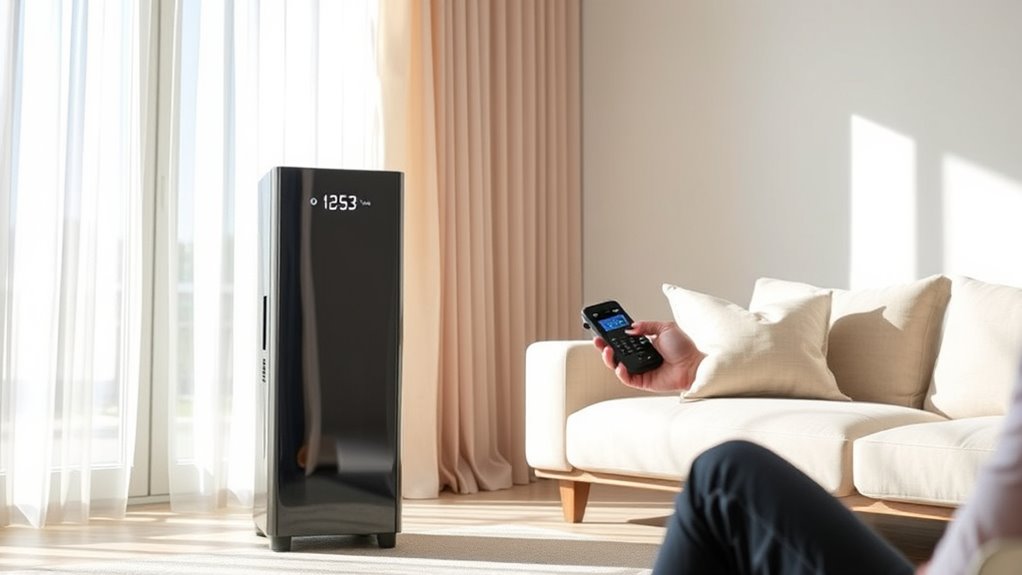
Understanding your air purifier’s specifications and settings is essential for maximizing its performance. Start by reviewing the filter specifications—knowing whether your device uses HEPA, activated carbon, or pre-filters helps you choose the right replacement schedule and guarantees effective air cleaning. Next, familiarize yourself with the device settings, such as fan speeds, timers, and modes like sleep or turbo. Adjust these settings based on your needs; for example, set a higher fan speed during heavy pollution or lower during nighttime for quieter operation. Properly understanding and utilizing these features will optimize filtration, improve air quality, and extend your device’s lifespan. Always consult the user manual to ensure you’re configuring your air purifier correctly and safely. Additionally, understanding filter types and their specific functions can help you select the most suitable options for your environment. Being aware of smart capabilities can also enhance your control over the device, especially if it offers WiFi or voice command features. Regularly monitoring the air quality levels can help you adjust settings proactively to maintain a healthy indoor environment. Moreover, being knowledgeable about device maintenance routines ensures your air purifier continues to operate effectively over time.
Using Air Purifiers in Conjunction With Other Ventilation Methods

Combining air purifiers with other ventilation methods can substantially improve indoor air quality. Proper ventilation integration enhances air exchange rates, reducing pollutants more effectively. To optimize this, consider these strategies:
Enhance indoor air quality by combining air purifiers with effective ventilation strategies for cleaner, healthier spaces.
- Use exhaust fans in kitchens and bathrooms to quickly remove moisture and odors.
- Regularly open windows to increase natural air circulation and boost air exchange rates.
- Install mechanical ventilation systems, like HRVs or ERVs, to maintain consistent airflow.
- Coordinate purifier operation with ventilation schedules to prevent stale air buildup.
- Utilize Vetted portable camping air purifiers designed for different environments to ensure effective purification across various settings. Additionally, understanding the hours of operation for local retail stores can help plan maintenance or replacements for your air purification system efficiently. Maintaining a proper airflow balance between ventilation and purification can further enhance indoor air quality and system longevity, especially when considering air exchange rates to optimize overall system performance. Also, paying attention to filter maintenance is essential to keep the purifiers functioning effectively over time.
Common Mistakes to Avoid for Safe and Effective Use
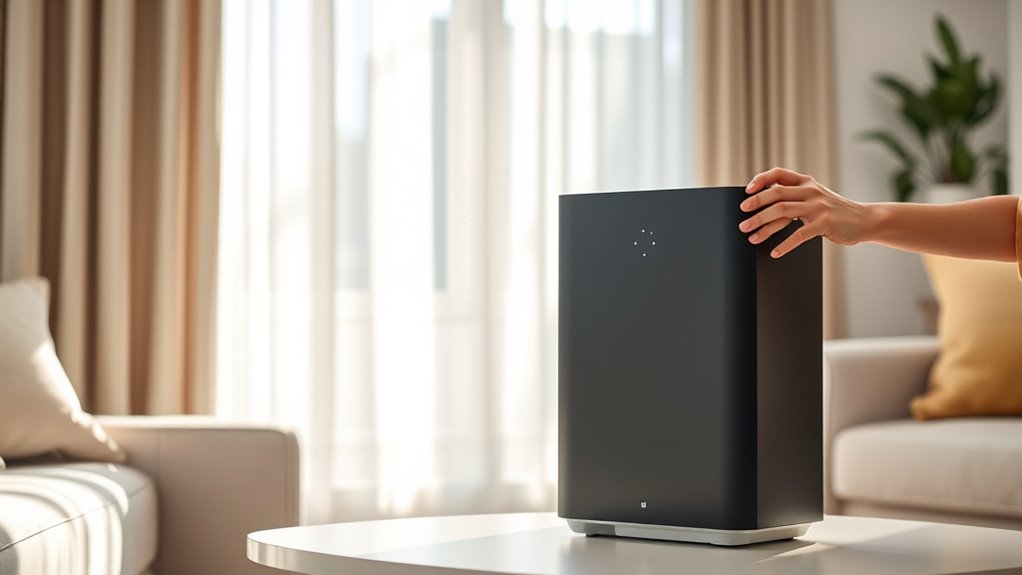
To guarantee your air purifier works safely and effectively, it’s important to avoid common mistakes that can compromise its performance or pose health risks. Many people have air quality misconceptions, like thinking that leaving the device on constantly is always best, which can waste energy and reduce lifespan. Another mistake is not following device safety tips, such as blocking air intake or outlet vents, which hampers proper airflow. You should also avoid using the wrong filter type or neglecting regular maintenance, as this decreases effectiveness and can release pollutants. Be sure to place your purifier in a suitable location, away from curtains or furniture, to maximize circulation. Staying informed about proper usage helps ensure safe, efficient operation and cleaner indoor air. Additionally, understanding the importance of filter replacement can significantly improve your device’s performance and longevity. Regularly inspecting your air purifier for clogged filters or debris can prevent airflow issues and maintain optimal operation. Moreover, ensuring proper placement away from obstructions can help optimize air circulation and enhance overall effectiveness.
Frequently Asked Questions
Can Air Purifiers Eliminate All Indoor Pollutants Completely?
Air purifiers can’t eliminate all indoor pollutants completely because of their limitations in pollutant removal. While they substantially improve air quality, some particles, gases, and odors may still linger. You need to understand that air purifier limitations exist, especially with certain chemicals or very small particles. To maximize their effectiveness, use them correctly, maintain filters, and combine with proper ventilation, but don’t expect perfect pollutant removal every time.
Are There Any Health Risks Associated With Using Air Purifiers?
Beware of potential health hazards when using air purifiers. Allergic reactions can worsen if filters aren’t maintained properly, leading to increased dust or mold. Ozone-emitting purifiers pose additional risks, especially for allergy concerns, as ozone can irritate your lungs. Regularly check your device, choose ozone-free models, and keep filters clean to minimize dangers and guarantee safe, healthy air quality in your space.
How Loud Are Different Air Purifier Models During Operation?
When considering noise levels, different air purifier models vary markedly during operation. You’ll find that some are very quiet, producing around 20-30 decibels, which is comparable to a whisper, while others can reach 60-70 decibels, about the noise level of a normal conversation. Checking decibel comparison charts helps you choose a model that balances effective air cleaning with minimal disturbance, ensuring your space remains peaceful.
Do Air Purifiers Work Effectively in Large or Open Spaces?
Air purifiers can work effectively in large or open spaces if you choose a model with appropriate room size and airflow efficiency. You need to match the purifier’s capacity to your space to guarantee proper air circulation. Larger spaces require higher airflow efficiency and possibly multiple units. Keep in mind, a purifier that’s too small won’t clean the air well, so always check the manufacturer’s specifications for ideal performance.
Is It Safe to Leave an Air Purifier Running 24/7?
Ever wondered if leaving your air purifier on 24/7 is safe? It can be, if you follow proper maintenance schedules and replace filters regularly. While continuous operation maximizes air quality, neglecting filter replacement risks reduced efficiency and potential hazards. Keep an eye on your device’s instructions, and you’ll enjoy clean air around the clock without worries. Just stay diligent with maintenance, and your air purifier will serve you well always.
Conclusion
To keep your air purifier working safely and effectively, stay mindful of proper placement, regular filter changes, and understanding its features. Don’t forget to combine it with good ventilation, and steer clear of common mistakes. Remember, even in today’s high-tech world, a little old-fashioned care—like checking filters as you would a treasured heirloom—can make all the difference. Treat your air purifier like a trusted companion, and breathe easier every day.

